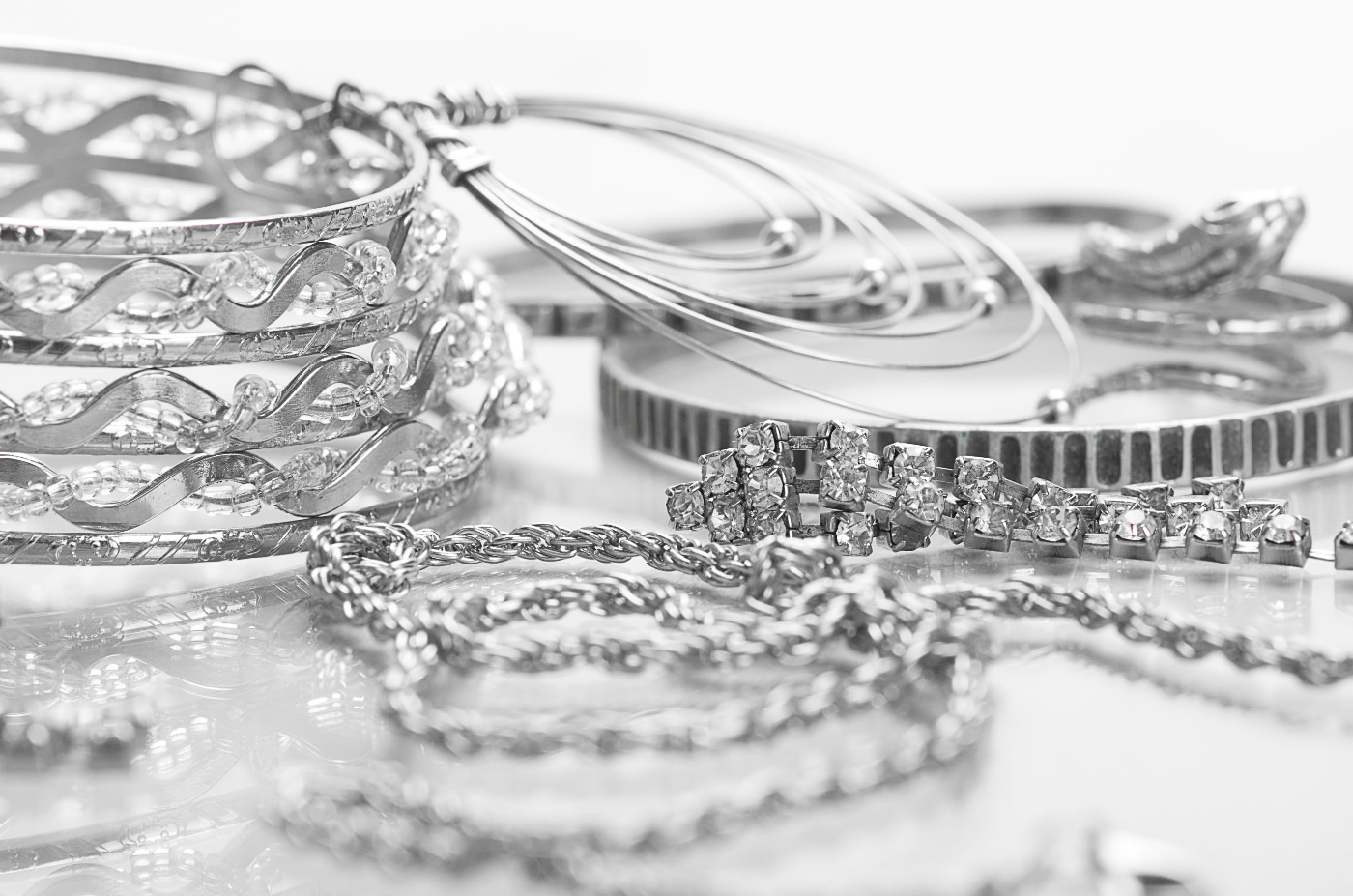
The spot price for silver on the commodities market is for purse silver. Pure silver is usually marked with the number 999 or 99.9 to indicate its purity. Most jewelry is made with sterling silver, which is an alloy to give silver enough hardness to withstand normal use. Sterling is marked 958 or 925 to indicate that it is the alloy. The sterling silver standard has a minimum purity of 9.25%, meaning it has 7.25% of other metals such as copper. By far the vast majority of items made in the US from about 1860 to 1970–especially items made before 1940–are marked sterling or sterling silver without the 925 identifying number. However, in England, silver items were usually stamped with a maker's mark, called a hallmark, to guarantee the quality and reputation by the maker.
The value of your silver jewelry depends upon several factors and can be worth much more than the spot price. Rare silverware, for example pieces made by Tiffany or Paul Revere, can command a high price at auction.
However, there is also the possibility that many items are silverplate with forged maker's marks. You have to be careful. If you have what you believe to be an antique piece of silver, you can look up the hallmarks here.
Silverplate is made by placing a thin layer of silver over a base metal like bronze or copper. Silverplate usually has no markings to indicate quality of the silver. However, the company that made the products can often be found stamped on the items. In rare cases, even silverplate can have exceptional value based upon its rarity, but normmal silverplate has little value beyond what you would pay for everyday "silverware." In the U.S., silverware is the common name for all types of forks, spoons, and knives, no matter what metal or alloy is used to make it. Much of it is stainless steel, but we don't call it "steelware."
STERLING SILVER - 925/1000 (92.5%) fine silver and 75/1000 (7.5%) copper.
COIN SILVER - 900/1000 (90%) fine silver and 100/1000 (10%) copper. This cannot be called sterling.
BRITANNIA SILVER - Must be at least 95.84% pure silver by weight.
MEXICAN SILVER - Usually contains 95% silver and 5% copper; more pure than sterling. (Not all silver produced in Mexico is Mexican Silver).
NICKEL AND/OR GERMAN SILVER - Neither contains any silver.
The use of silver in human culture has a long history, dating back 6,000 years to Mesopotamia, where workers were paid in silver or the equivalent weight of silver in grain. Other cultures, where gold was more prevalent, may have received some by trade, but dealt primarily in gold or copper as their currency, if they used a metals at all. China did not start mining silver until the 8th Century AD. However the Greeks and Romans had silver mines as early as the 6th Century BC. Silver's use in utensils, jewelery, and as coinage has been around for ages. More plentiful than gold, the value of silver has flucuated widely over time. Sometimes rising and sometimes crashing in value. The great silver market crash in 1980 was triggered by the Hunt Brothers' attempt to corner the silver market. Prices crashed from $50 per oz. to $10 per oz.